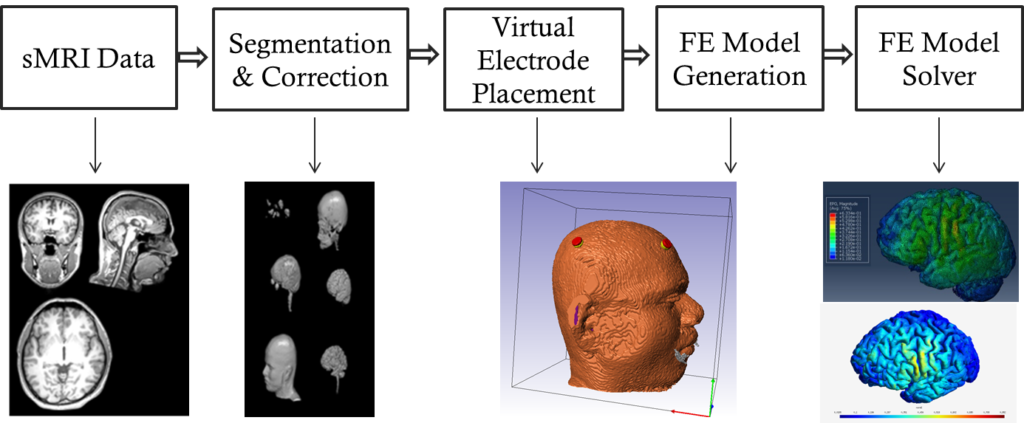Designing TDCS modeling workflow
We perform tDCS modeling by implementing series of procedures on structural brain MRI. These steps involve, segmentation of different tissue classes from brain MRI, post-processing of segmented images, virtual placement of electrodes, creating a finite element model from brain tissues and finally solving the model to get electric field distribution. We use high resolution structural brain magnetic resonance images (MRI) for creating the finite element brain models. Further, we virtually place the electrodes on these models, which resembles the electrode configuration and positions as per actual clinical settings. These brain models will then be simulated to compute the distribution of electric field upon tDCS stimulation

Localizing brain regions in tDCS responders and non-responders
The computational brain modeling will be used to simulate the flow of electric current upon tDCS stimulation. We performed computational tDCS modeling for responder and non-responder of the tDCS to locate the brain regions. This will eventually help us in optimizing tDCS stimulation parameters as well as targeted delivery of current to specific brain regions, which will further lead to personalization of tDCS for better outcomes.

Non-invasive temporal interference brain stimulation
A workflow related to temporal interference demonstrates the potential of ABAQUS electrical analysis technology to model neuromodulation in deep brain regions. This simulation applies superposition technique of two independent electric fields generated by forcing alternating current at two different high frequency electric fields towards the gray matter resulting in temporal interference. When two alternating current fields intersect deep inside the brain a pattern of interference is created which oscillates with an ‘envelope’ at a much lower frequency [i.e. difference between two high-frequencies or beat frequency] that can modulate neural activity in the brain. In addition these analyses, a post-processing technique has been developed for visualizing in plotting the region of Temporal Interference in the human head. Our simulation results illustrate the influence of type of electrode, intensity of alternating current and spatial position of electrode in TIS providing vital insights towards developing human brain applications of this innovative technique in treating Parkinson’s disease, depression, schizophrenia and other neuropsychiatric disorders.

